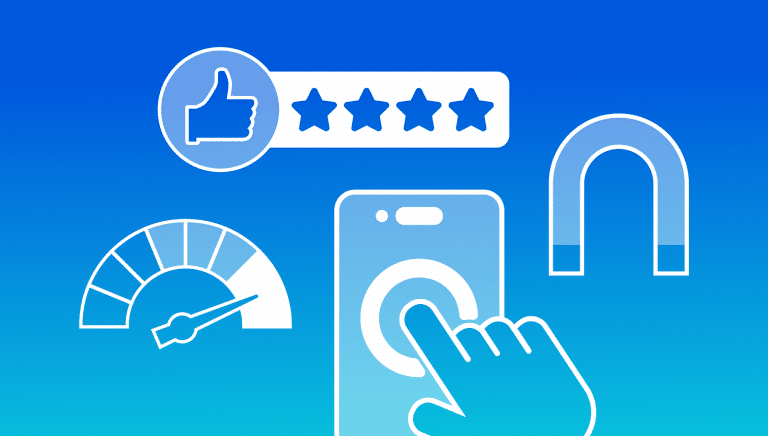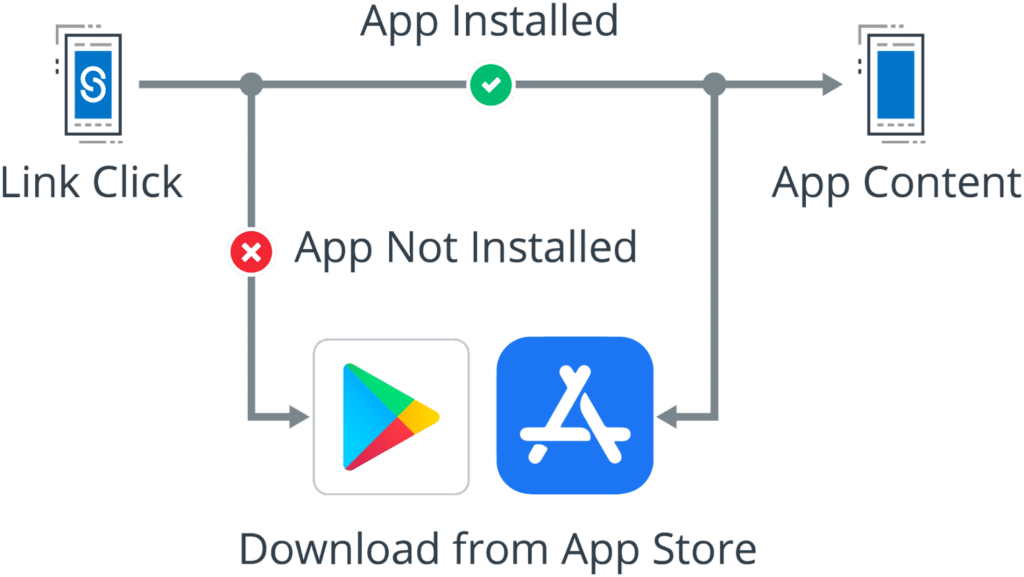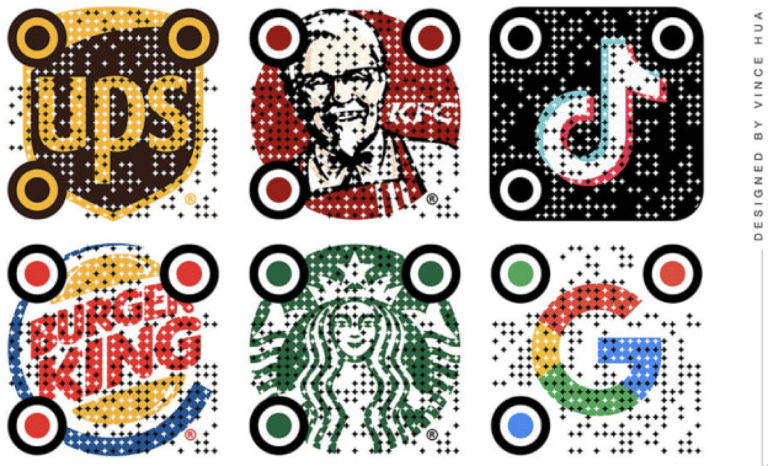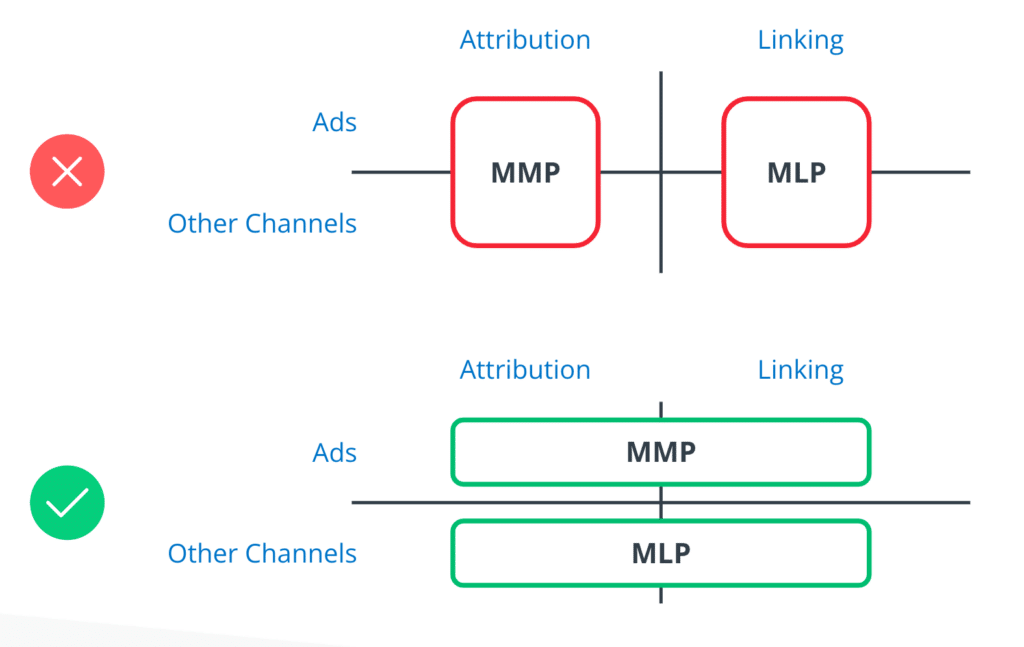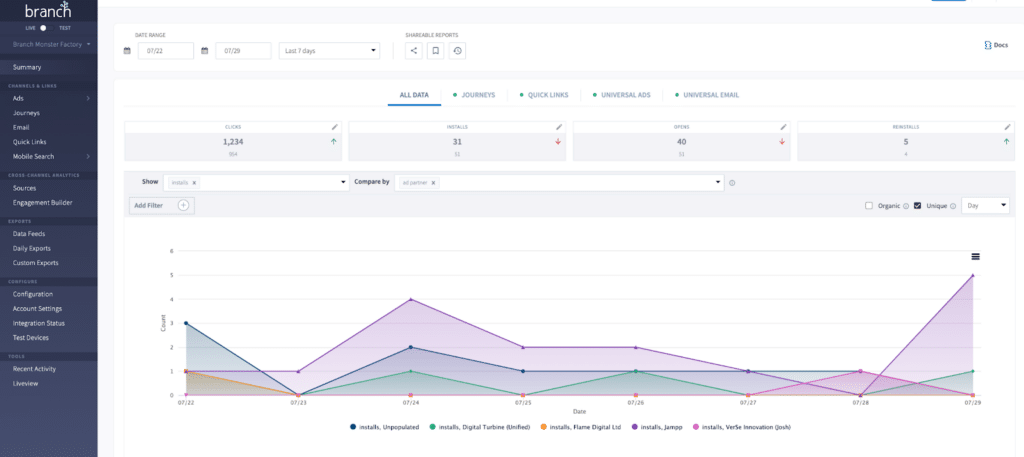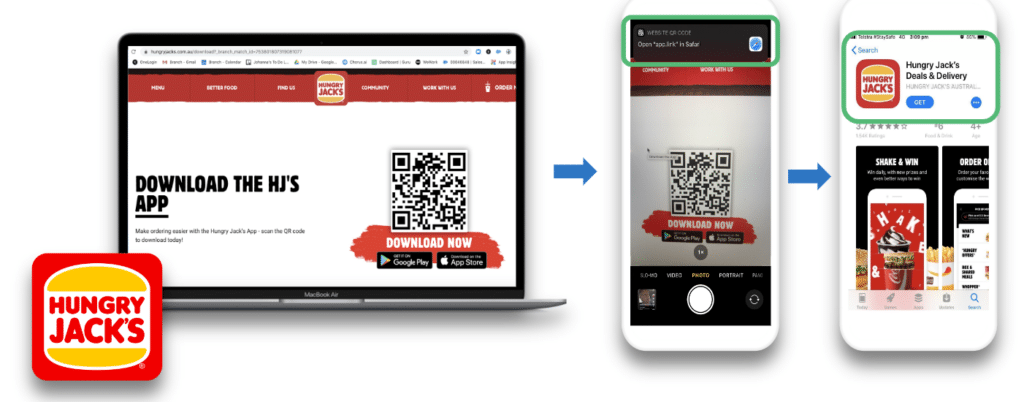Everybody reading this blog probably already knows what we mean when we talk about an MMP. In case you’re wondering, an MMP is a “mobile measurement partner.” Now, if we mention an MLP, probably only a few will know what we mean. MLP stands for “mobile linking platform,” a powerful deep linking and attribution tool for your owned and earned channels. But don’t worry, more on that later. Let’s talk deep linking first.
The evolution of deep linking
Deep linking has been around for a long time and started popping up in tech media around 2006 to highlight the growing practice of providing Google (and other search engines) a way to create visibility for content beyond just a website home page. Over time, deep links turned from a simple tool to bring you to a web page into critical technology that has become complex and powerful. Deep links can now be used across all channels and platforms, embraced today by almost every global omni-channel brand.
Businesses that saw the long-term potential of deep linking have evolved to become experts in everything related to deep linking including routing, measurement, privacy, security, and industry change. Many of these companies have now grown into MMPs that focus solely on paid ad channels.
However, a smaller subset of companies like Branch have become industry leaders not only as MMPs but also as MLPs that focus on owned and earned channels. The advantage of using a partner like Branch is that you have a solution that provides complete deep linking and attribution coverage of all your channels (i.e. paid, owned, and earned), ad platforms, and networks. The ability to leverage and understand all possible channels is a huge plus in a mobile world of constant change.
What exactly is an MLP?
While MMPs only offer deep linking and measurement for paid ads, MLPs offer deep linking and measurement for owned, earned, and organic channels. They provide a reliable and configurable linking solution for brands that want to ensure their deep links work — reliably and always. Mobile linking platforms also provide insights into performance across non-paid marketing channels.
At its core, a mobile linking platform is a hosted platform that will route all your deep links and provide a portal for creating, editing, and measuring deep links. A mobile linking platform does this while allowing collaboration among teams. Not only that, but you should also expect an MLP to maintain user context across devices, providing detailed measurement reports and valuable insights about how your links (and campaigns) are performing. Ultimately, your mobile linking platform should provide the tools to help your brand drive conversions and increase return on investment (ROI) across non-paid channels such as email, QR codes, organic social, smart banners, and SEO.
An MLP should deliver a personalized deep linking user experience and measurement that will accelerate conversion growth and increase ROI for any omnichannel brand with an app. You can consider these platforms as deep linking and attribution experts with a deep understanding of how every facet of linking works across channels.
How is an MMP different?
An MMP focuses solely on paid ad channels. While a mobile measurement platform will leverage deep linking technology and measurement tools similar to an MLP, it also has to engage with complex ad networks that require deep links to work differently at times with many possible edge cases. For example, mobile measurement platforms have to contend with SKAN data and each of the numerous self-attributing networks (SANs). This requires them to prioritize reducing fraud and ensuring privacy compliance across each network.
So while there is a lot of technology crossover with an MLP, the difference in how MMPs manage links and collect data can be profound. Incorporating an MLP into your omni-channel strategy will benefit you in multiple ways.
How does an MLP work?
An MLP is expected to tie together the deep linking experience and attribution for your owned and earned channels. So what does that mean?
Cloud-based, hosted platform
An MLP determines which linking experience to use for each visitor. On the web, browsers handle their own routing based on the data contained in the link URL, so the experience feels very seamless to users. However, mobile links can get more complicated. For example, if the app isn’t installed, the user can get an error message. So, the primary purpose of a hosted platform is to gather the relevant user data (e.g. device type, app installation status, data from link opened) and determine the best possible user experience (website, App Store, Play Store, directly to app), and then seamlessly route users.
SDK interaction
SDKs allow each app or website to receive instructions from the hosted platform (e.g. an MLP) about what content to display. The app or website leverages the deep link data to understand what content the visitor requested and fires any analytic tasks required.
All of this sounds easy, but it does require careful choreography so the process feels invisible to the user. SDKs are very valuable because they facilitate deep link usage by wrapping convenient programming interfaces around calls to the hosted platform, making them a very powerful tool that a linking platform brings to the table.
A best-in-class MLP works behind the scenes to give you peace of mind that your links will just work, that you are capturing accurate data, and that the user experience will be seamless.
Should I build an MLP myself?
Sure, it is possible to create and deploy deep links without the use of a technical partner. You can even try to capture attribution by cobbling together data from different platforms. But, below we highlight key reasons why you shouldn’t go down this road.
1. Deep linking requires a lot of technical expertise
You will need a team of developers who are familiar with different types of mobile devices and operating systems. This includes knowing how to handle the different types of links that can be created and the data that can be captured, which is very complex. They would also need to constantly monitor the links and data to ensure they are performing correctly while troubleshooting any problems.
2. A broken experience will negatively impact your brand
It can take weeks or even months to build a deep linking and measurement infrastructure from scratch. And, if you’re not careful, it can be easy to make mistakes, like losing context along the user journey or duplicating attribution, causing frustration for users and yourself. Without a user-friendly or reliable deep linking experience, you will see a negative impact on your brand and lose ROI.
3. Deep linking can be expensive
You can easily spend a significant amount of budget and resources to build and maintain your own deep linking infrastructure. An MLP will allow you to easily create, edit, and measure your link campaigns with a much lower investment while providing tools for data reporting and team collaboration.
If you decide to build this type of linking and measurement infrastructure in-house, you will miss out on many of the benefits of an MLP.
What are the benefits of an MLP?
Let’s drill down into the key benefits of an MLP. At its core, a mobile linking platform is a powerful linking infrastructure. It also provides trusted attribution for owned and earned channels and summarizes data and insights in one place with access across teams.
Scalable and reliable deep linking that just works
A significant benefit of an MLP is to deliver deep links that can be easily deployed across every owned and earned marketing channel, even when users transition from one device to another (for example, desktop to app). A mobile linking platform will keep context by understanding how to route users across use cases where they would typically disappear from view, such as when passing through the App Store or Play Store or in Facebook. Your MLP should also handle those unique edge cases for you so users get a reliable deferred deep linking experience across complicated scenarios, even after install. The most common example of this is deferred deep linking.
Powerful visibility and measurement for owned and earned channels
An MLP helps you measure things that were hard or impossible to measure previously. Its primary goal is to provide brands the tools to accurately attribute installs, opens, and down-funnel, in-app conversions for owned and earned channels while providing a powerful dashboard that displays your performance with detailed insights and flexible reporting. This rich data alone makes an MLP a worthwhile investment.
Unlock new ways to acquire and engage app users with less investment
As many of the old mobile marketing standbys (i.e. paid ads) are getting more difficult and more expensive, an MLP will open up new ways for you to grow your app. You will also save development time with a reliable linking infrastructure. An MLP makes it easy to create and scale links via API, app, dashboard, or Chrome extension across use cases and channels — like customized smart banners, email promotions, and app-enabled QR codes — without a technical lift.
Industry expertise that will future-proof your mobile growth strategy
When major changes are announced from Google or Apple (e.g. Private Relay), you won’t need to rebuild your linking strategy with an MLP. Your MLP should have the expertise to quickly understand the impact of these industry changes and provide dedicated deep linking experts who will proactively develop solutions to keep your linking and measurement working as expected.
Overall, an MLP provides reliable, powerful deep linking and measurement experiences. It also helps you stay ahead of your competitors by constantly developing new, innovative tools to support your complex mobile linking strategies and mobile growth goals.
Branch is a best-in-class MLP solution
The mobile industry is in a state of constant change and deep linking is not immune to this reality. In addition, major platforms continue to try to keep their users within their walled gardens, making it challenging to link outside of their ecosystems. With Branch, you can offer a personalized link experience across all your channels, accurately measure and attribute your results, and save a ton of development time. Branch’s NativeLink™ solution is a great example of this type of approach.
Branch’s best-in-class MLP understands how to adapt to all these changes and challenges while allowing you to easily deploy, monitor, and measure deep links. Our MLP delivers unparalleled match rates and links that just work. This, in turn, allows you to drive your mobile growth with increased conversions and higher lifetime value (LTV) users across owned and earned channels.
Learn more about Branch’s Mobile Linking Platform.
Branch provides the industry’s leading mobile linking and measurement platforms, offering solutions that unify user experience and attribution across devices and channels. Branch has been selected by over 100,000 apps since 2014 including Adobe, BuzzFeed, Yelp, and many more, improving experiences for more than 3 billion monthly users across the globe. Learn more about Branch or contact sales today.






















